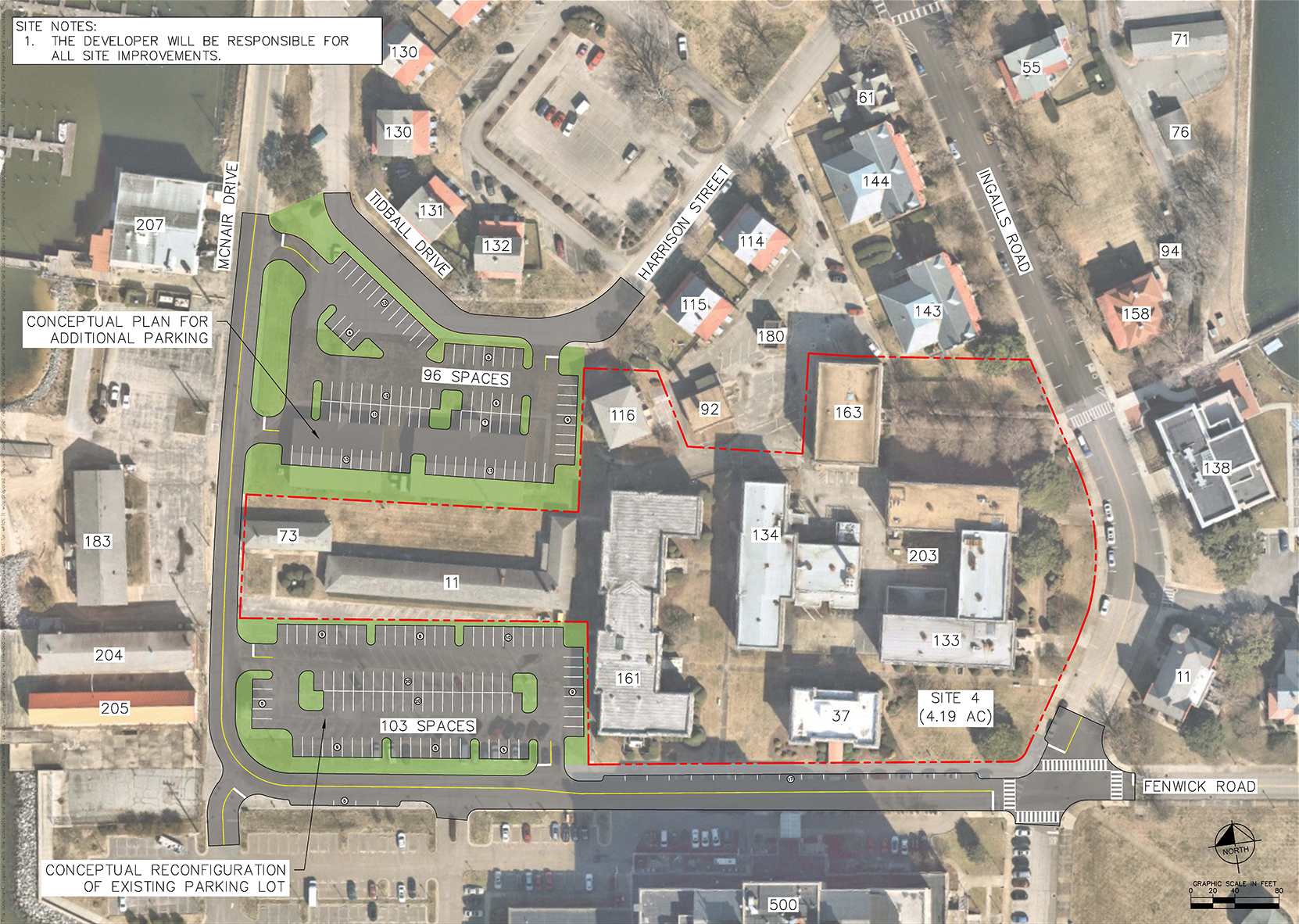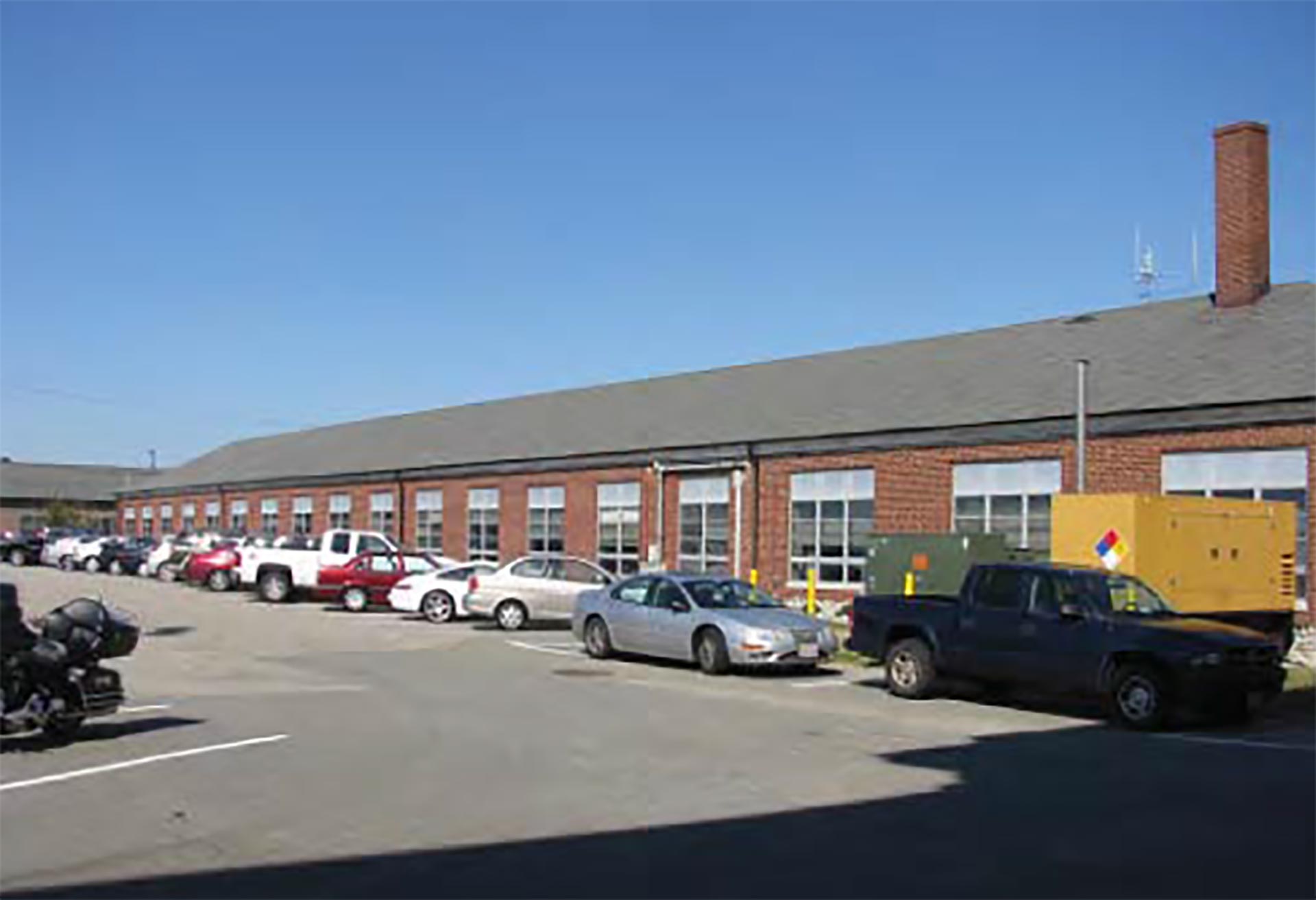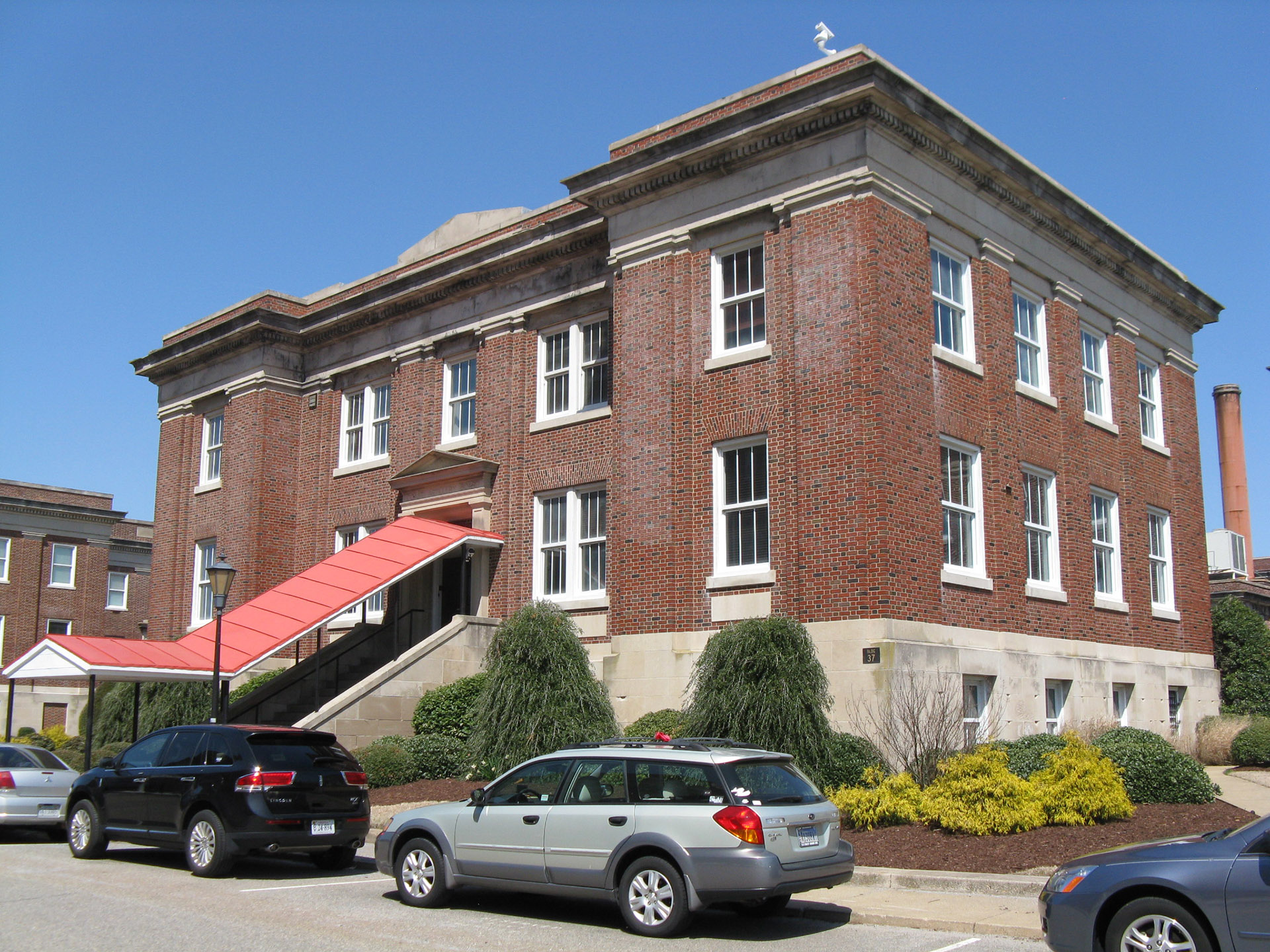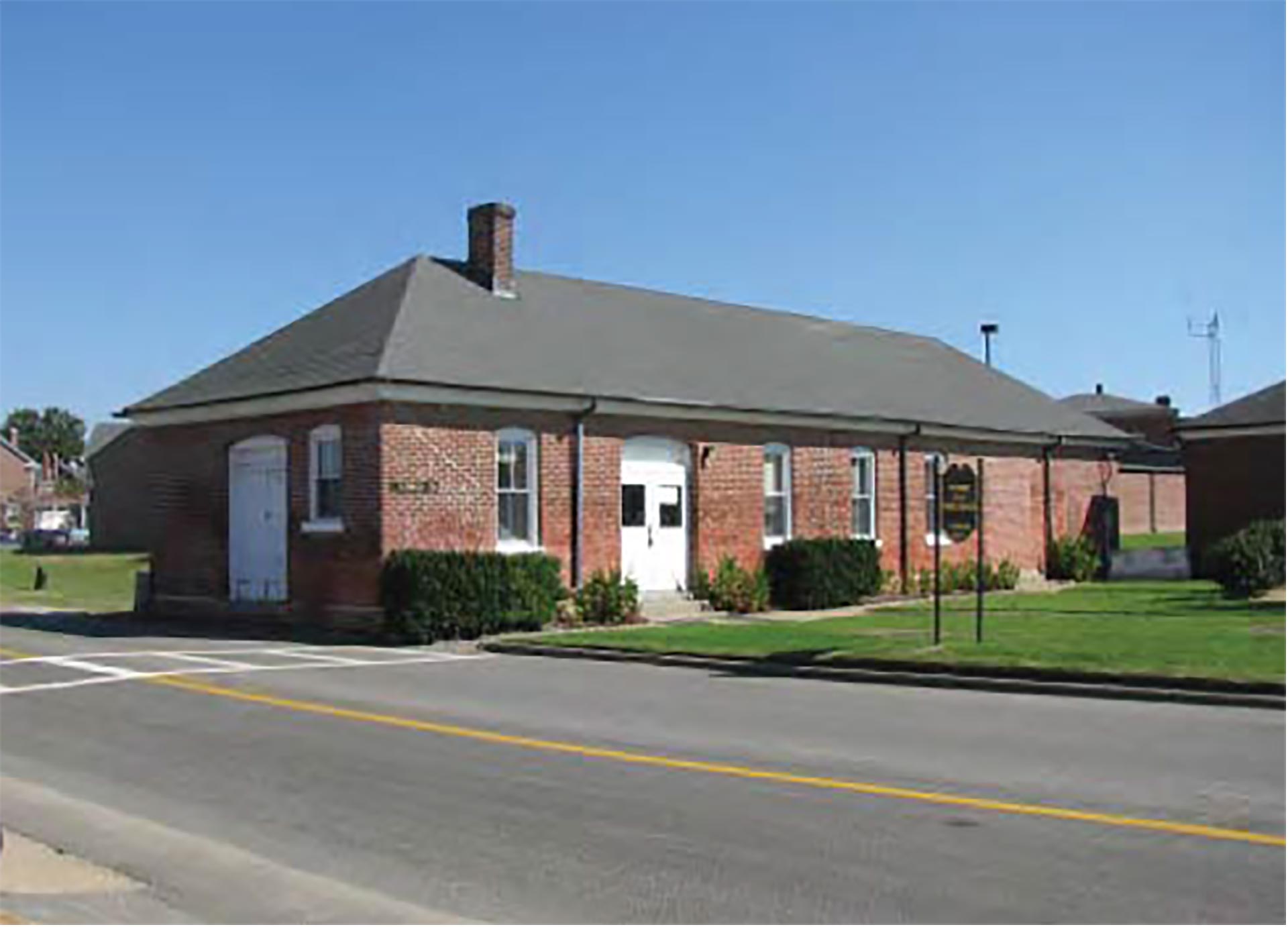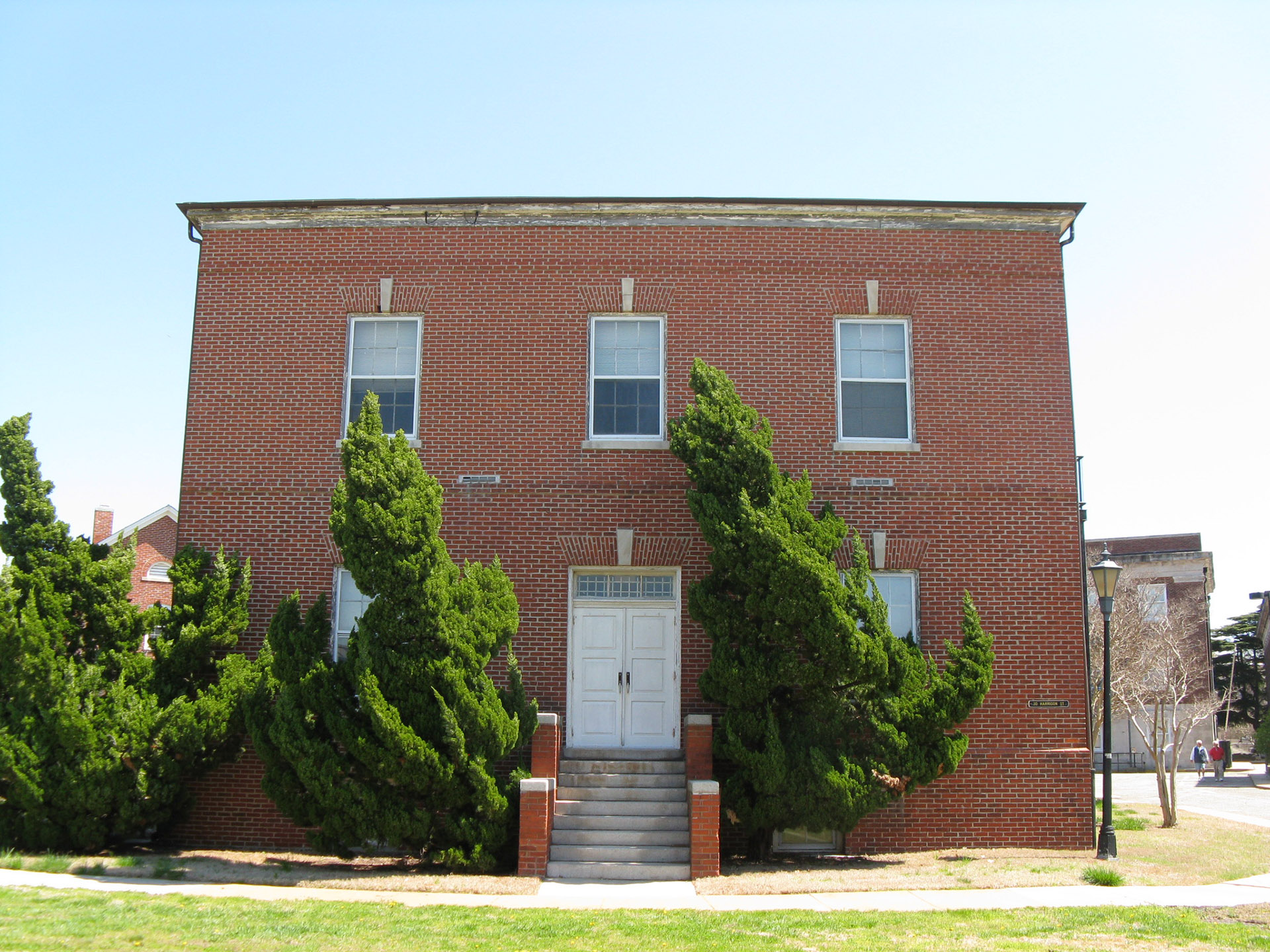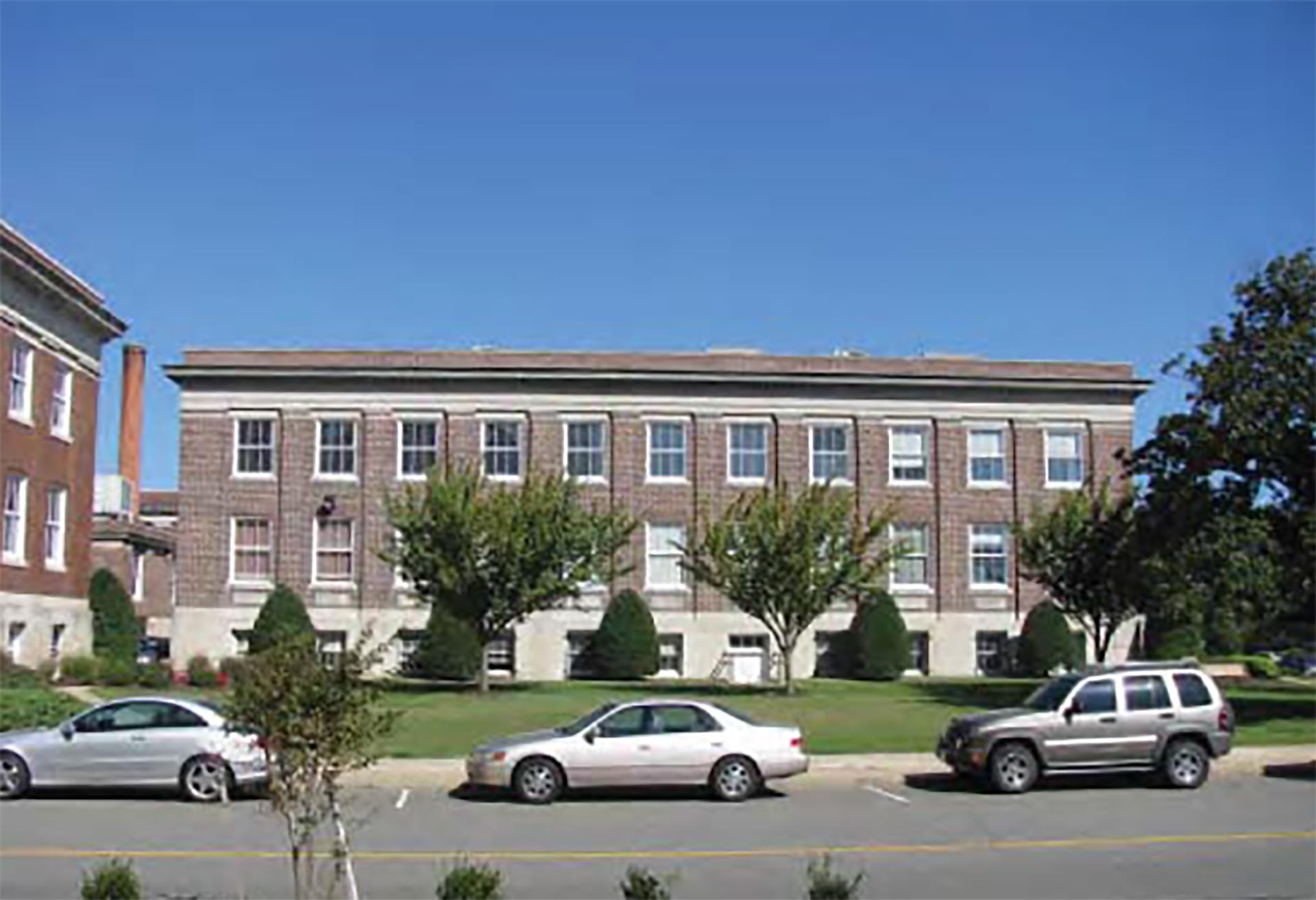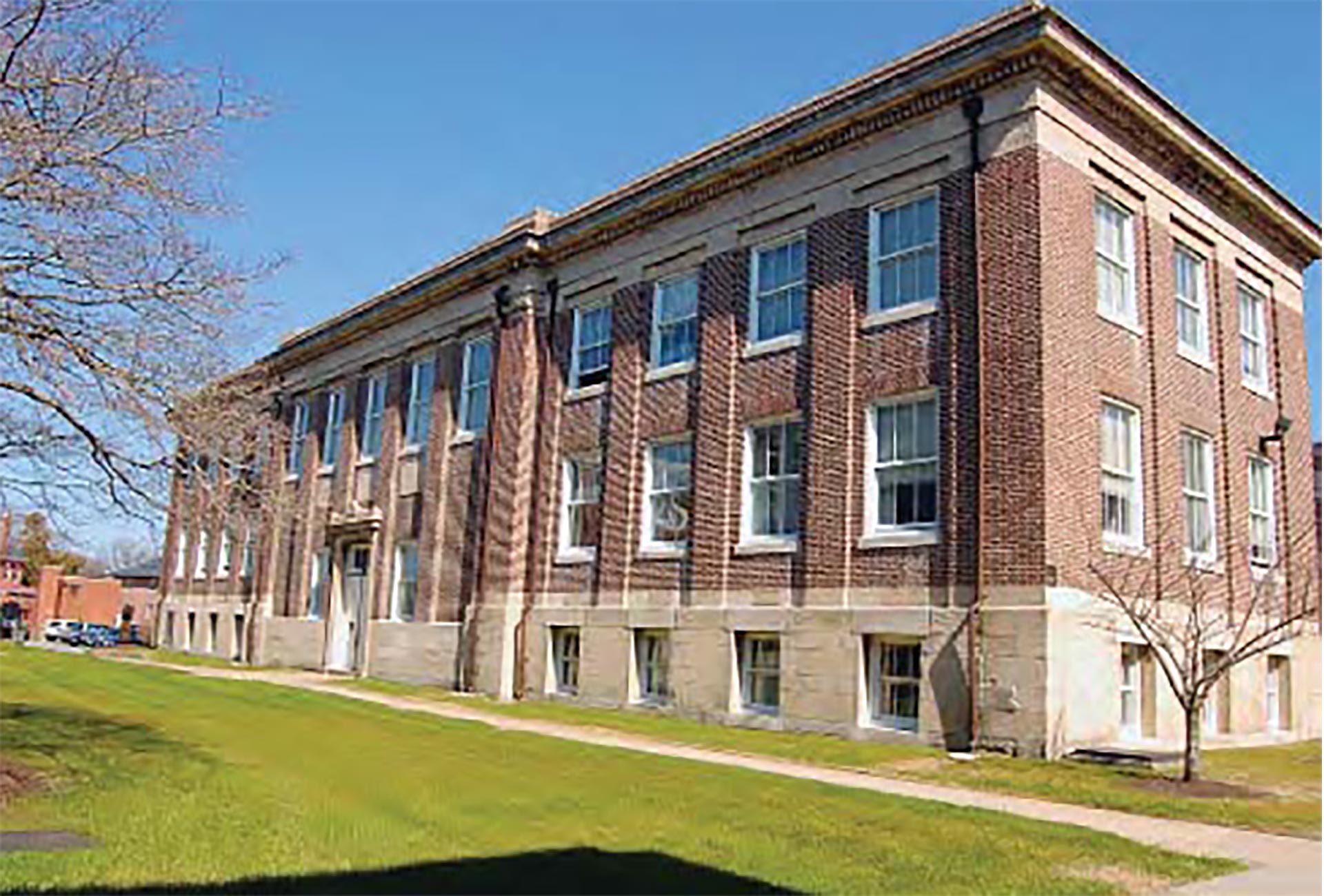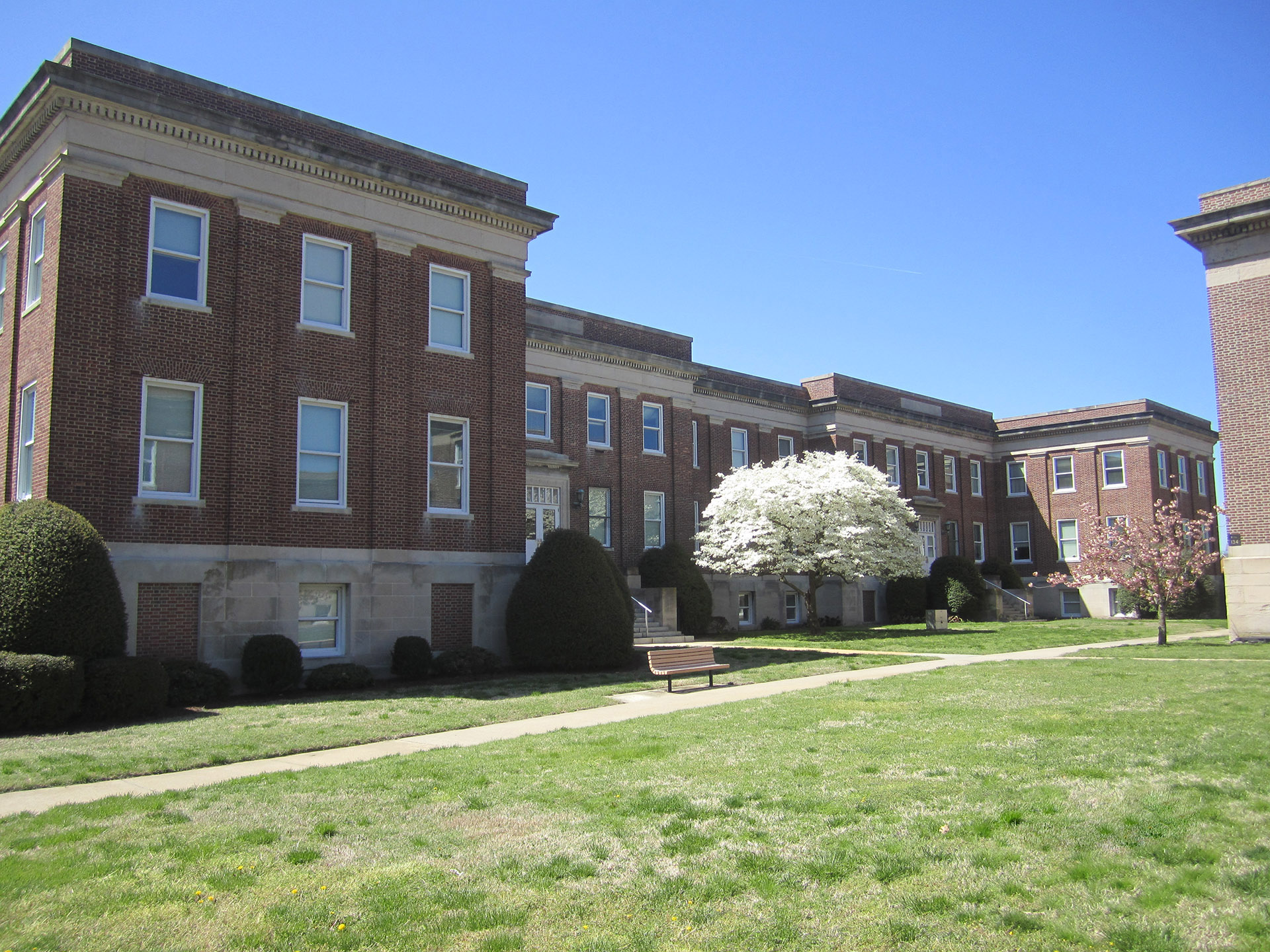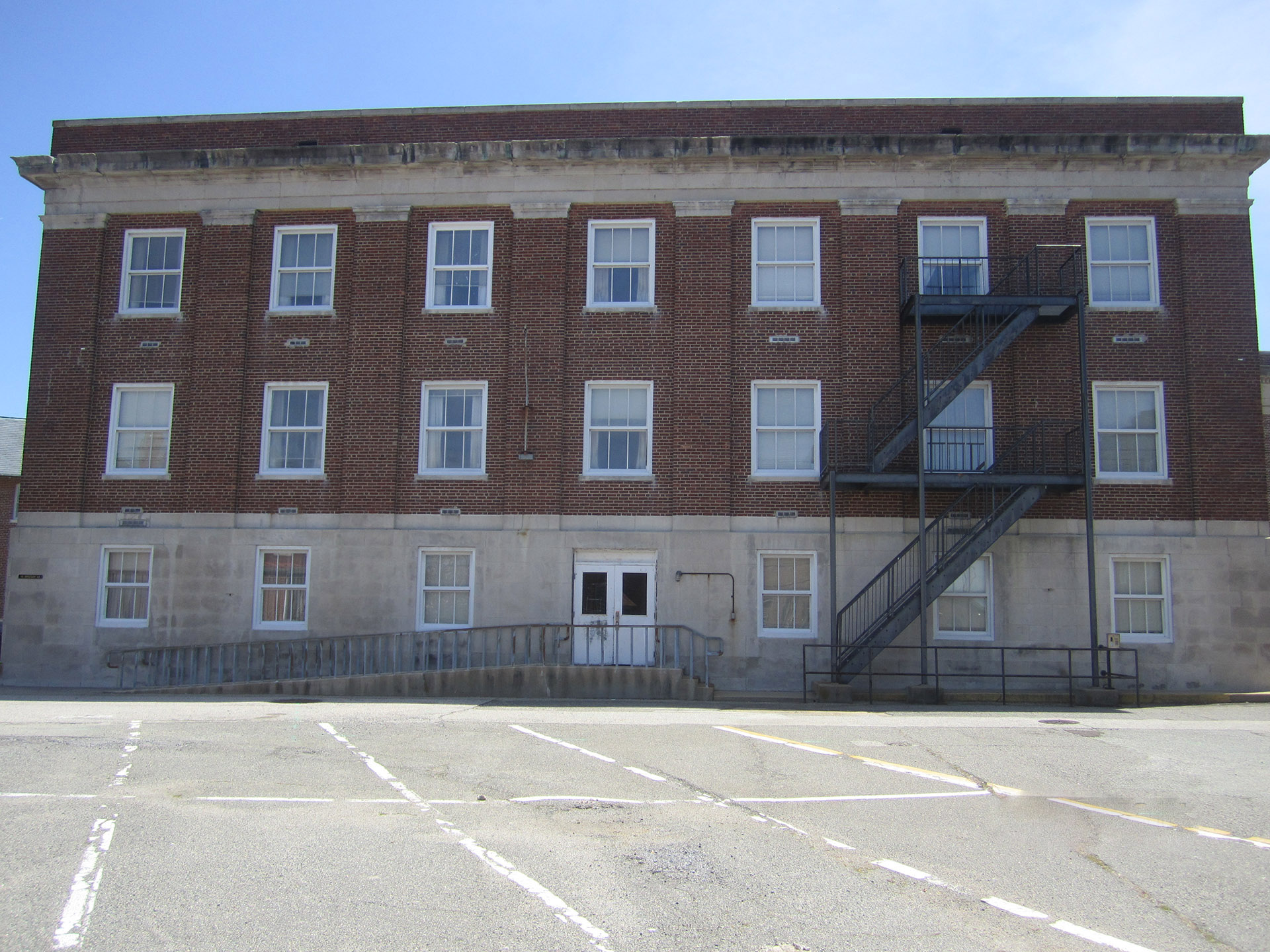Redevelopment Site 4
Redevelopment Site 4 contains approximately 4.2± acres, lies entirely in the PA Management Zone D, and contains the six-building complex commonly referred to as the TRADOC complex as well as Building 11 and 73. The total square footage of the eight buildings in Site 4 is approximately 147,116± square feet.
Building 11 is located a 3 Fenwick Road. The building was originally constructed as a garage during a massive building program begun at the post in 1933 in the wake of damage caused by two hurricanes that year. The building was converted to office space in 1946.
Building 11 is a single-story L-shaped building that contains approximately 8,685± SF. The building is listed as contributing to the NHL. The building’s last use was office space. The Master Plan reflects this building for retail use but the use could remain as office space. Due to its size, adaptive reuse to residential is likely infeasible unless part of a larger redevelopment plan.
Building 37 is located at 7 Fenwick Road. The building was constructed in 1934 as part of the effort to rebuild and improve the post after the 1933 hurricanes. It was the first structure on post with air conditioning as an integral part of the design. The interior was remodeled after World War II and converted into offices for the Army Ground Force in 1946. Building 37 was part of the Coast Artillery School buildings and most recently was used as office space for TRADOC.
Building 37 is a two-story rectangular building with a raised basement and contains 10,235± SF. The building is listed as contributing to the NHL. The Master Plan reflects this building as adaptive reuse to residential, but other uses such as hospitality, retail, or office may be appropriate.
Building 73 is located at 1 Fenwick Road. The building was constructed in 1893 and is one of a number of structures at Fort Monroe constructed during a major Army building program begun nationwide in 1874, after a period of stagnation following the Civil War.
Building 73 is a rectangular, single-story building containing 1,500± SF. The building is listed as contributing to the NHL. The building was last used as the FMA’s residential leasing office before the use was relocated to Building 27A. The Master Plan reflects this building for retail use but the use could remain as office space. Due to its size, adaptive reuse to residential is likely infeasible unless part of a larger redevelopment plan.
Building 116 is located at 30 Harrison Street. The building was constructed in 1906. Original plans show a singlestory building. At some point, either during construction, or shortly thereafter, a second story was added. The Quartermaster offices were located here as early as 1910. By the 1930s the building was used as financial offices. A fire in 1954 resulted in a new roof. The basement was converted to office space in 1957.
Building 116 is a two-story rectangular building with a raised basement containing 5,871± SF. The building is listed as contributing to the NHL. The building’s last use was office space. The Master Plan identifies the likely future use of this building as residential, but the building could remain as office or retail space. Due to its size, adaptive reuse to residential is likely infeasible unless part of a larger redevelopment plan.
Building 133, also known as Murray Hall, is located at 33 Ingalls Road. The building was one of three buildings constructed as a group. The building was completed in 1909, and originally served as officer classroom for the Coast Artillery Corps. When first constructed this building had a second-floor ballroom, which was converted into a conference room in 1950 and later remodeled when the building was converted to office space for the Continental Army Command and subsequently TRADOC.
Building 133 is a story-two, U-shaped building over a raised basement and contains 42,558± SF. The building is listed as contributing to the NHL. The Master Plan identifies the likely future use of this building as residential, but the building may support other uses including hospitality, office, or retail.
Building 134, also known as Lewis Hall, is located at 20 Whistler Lane. The building was one of three buildings constructed as a group. The building was constructed in 1909 and originally served as classrooms for the enlisted soldiers in the Coast Artillery Corps. The boiler/chiller plant for the Coast Artillery School complex is located in the basement of this building.
Building 134 is a two-story, rectangular building over a raised basement with a single-story, rear ell over a raised basement and contains 22,696± SF. The Master Plan identifies the likely future use of this building as residential, but the building may support other uses including hospitality, office, or retail.
Building 161 is located at 5 Fenwick Road. When originally built in 1912, this building served as the enlisted specialists’ barracks, to support the presence of the Coast Artillery School. The building size was more than doubled in 1938, when additions were made to both the north and south sides. Interior renovations were made in 1946 and 1986.
Building 161 is a two-story U-shaped building over an elevated basement. The building contains 40,468± SF. The building is listed as contributing to the NHL. The Master Plan identifies the likely future use of this building as residential, but the building may support other uses including hospitality, office, or retail.
Building 163, also known as Callan Hall, is located at 10 Whistler Lane. The building was constructed in 1940 for classroom space for the Coast Artillery School and was converted to office space in 1946.
Building 163 is a two-story, rectangular building over an elevated basement. The building contains 15,103± SF. The building is listed as contributing to the NHL. The Master Plan identifies the likely future use of this building as residential, but the building may support other uses including hospitality, office, or retail.
For the parking evaluation for Site 4, the FMA used an estimate of 1,100 SF per unit for the six buildings programmed for residential redevelopment or approximately 125 units. Using 1.5 spaces per unit, the required parking would be approximately 188 spaces. The FMA used 4 spaces per 1,000 SF of office/retail space. This would result in the need for approximately 42 spaces. The existing parking lot on the corner of Fenwick and McNair contains approximately 100 spaces. An additional lot could be constructed after removing non-contributing Buildings 266 and 267. This lot could create an additional 100± spaces. Since the both parking lots would support other uses in the area including the marina redevelopment, these lots would serve as shared parking lots. Depending on the final uses, additional parking may be required to support future uses.

